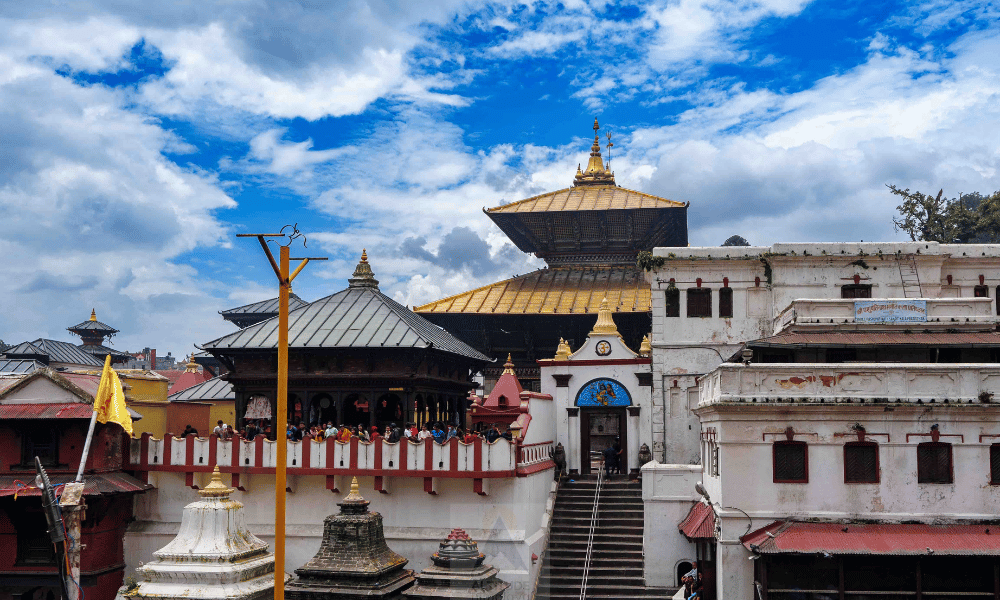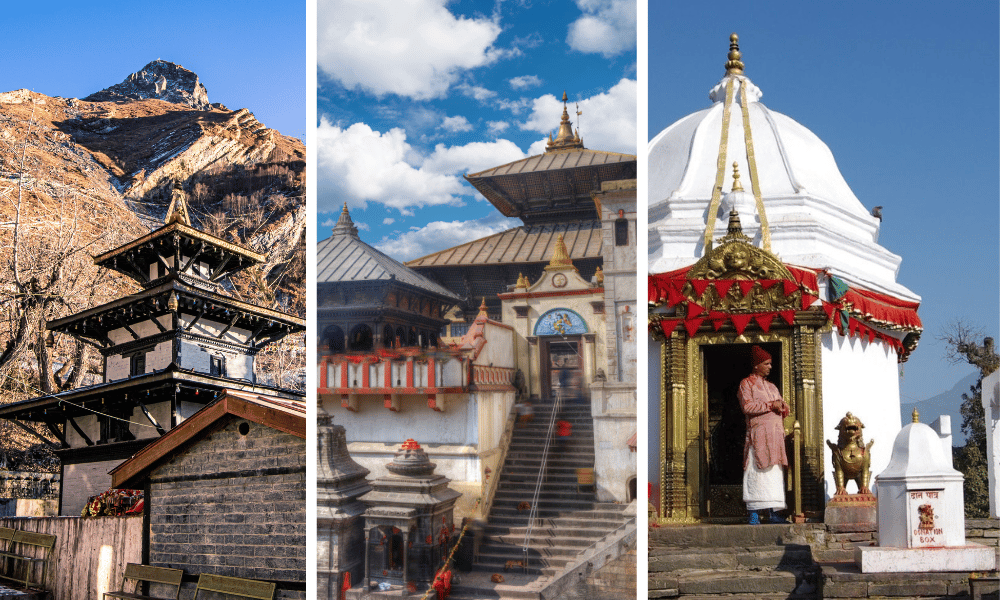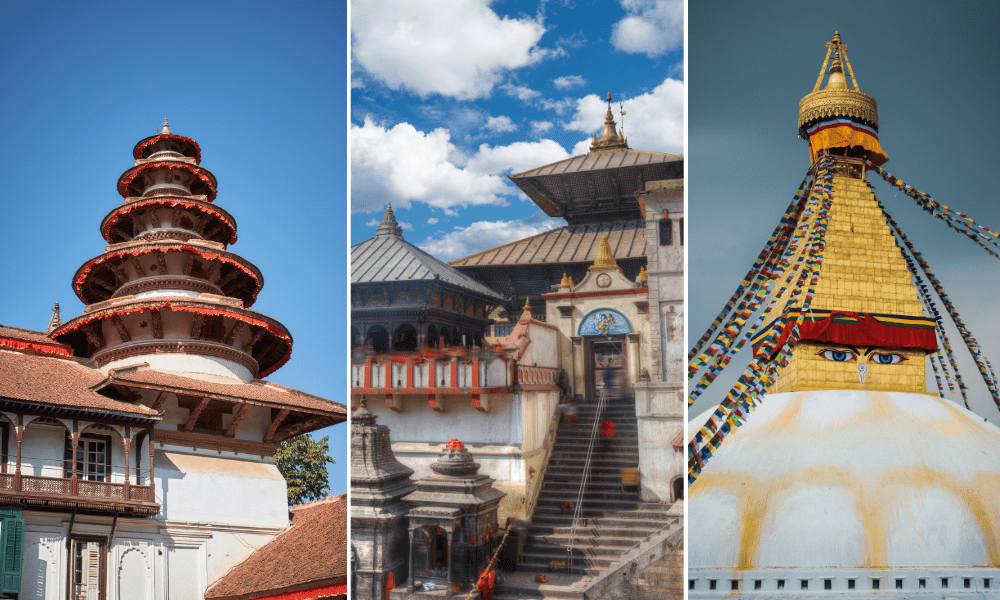Welcome to the Pashupatinath area, a visual tour through the middle of Kathmandu, Nepal, where busy cultural customs meet ancient spirituality. Nestled along the holy Bagmati River is the famous Pashupatinath Temple, a holy place for Hindus to visit and a reminder of Nepal's rich religious and historical history.
By exploring this holy place in great detail, our photo blog tries to catch the true spirit of Pashupatinath's unique charm. This sacred area is shown in different frames, from the main temple's beautiful architecture, complete with golden spires and silver doors, to the spiritual ghats where the Bagmati River flows peacefully, bringing the ceremonies of life and death.
After passing through the temple walls, the Pashupatinath area includes the calm riverbanks, the busy markets, and the joyful and religious cultural events that enhance the atmosphere. In addition to the temple's beautiful architecture, our camera will also capture the faith that fills the air, creating a calm and profound space.
Come with us as we explore the maze of smaller shrines and magnificent figures that honor many Hindu gods. Sadhus are holy men who walk the holy grounds wearing red robes and embodying a solitary spirit. Discover the stories of bygone times through the ancient buildings, temples, and beautiful woodwork.
In Depth Read: Pashupatinath Temple
Table Of Content
- Photos of Pashupatinath Temple
- Pashupatinath Main Entrance
- Pashupatinath Entrance Courtyard
- Pashupatinath Temple
- Pashupatinath Arya Ghat
- Bagmati River
- Sadhu’s in Pashupatinath
- Pandhra Shivalaya
- Guhyeshwari Temple
- Gorakhnath Temple
- Pashupatinath Viewpoint
- Sandhya Aarati
- Bachhareshwari Temple
- Religious Market
- Ram Mandir
- Yogi Caves
- Birupakshya Temple
- Shivaratri at Pashupatinath
- Teej at Pashupatinath
- Conclusion
Photos of Pashupatinath Temple
Here are some photographs of the Pashupatinath Temple and the area around it that show what this holy place in Kathmandu is all about. Each picture tells a story of spirituality and cultural riches, from the spiritual arati along the Bagmati River to the lively presence of Sadhus. These beautiful pictures will take you right into the holy place of Pashupatinath.
Pashupatinath Main Entrance
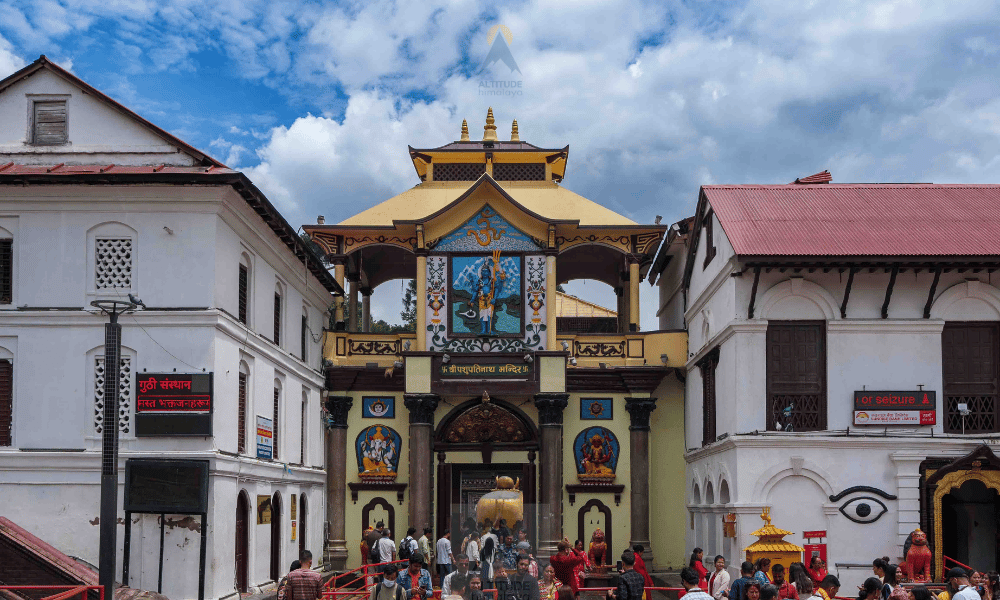
The Western Entrance of Pashupatinath Temple in Kathmandu is a traditional entrance to the sacred complex. It incorporates Nepali and Hindu architectural elements and serves as a symbolic gateway to the spiritual environment. Pilgrims enter via this gateway to gain entry to the temple grounds, which are decorated with cultural and religious symbols. Local sellers selling religious goods may have rituals and gatherings in the neighborhood. Visitors' safety is ensured by security procedures.
Pashupatinath Entrance Courtyard
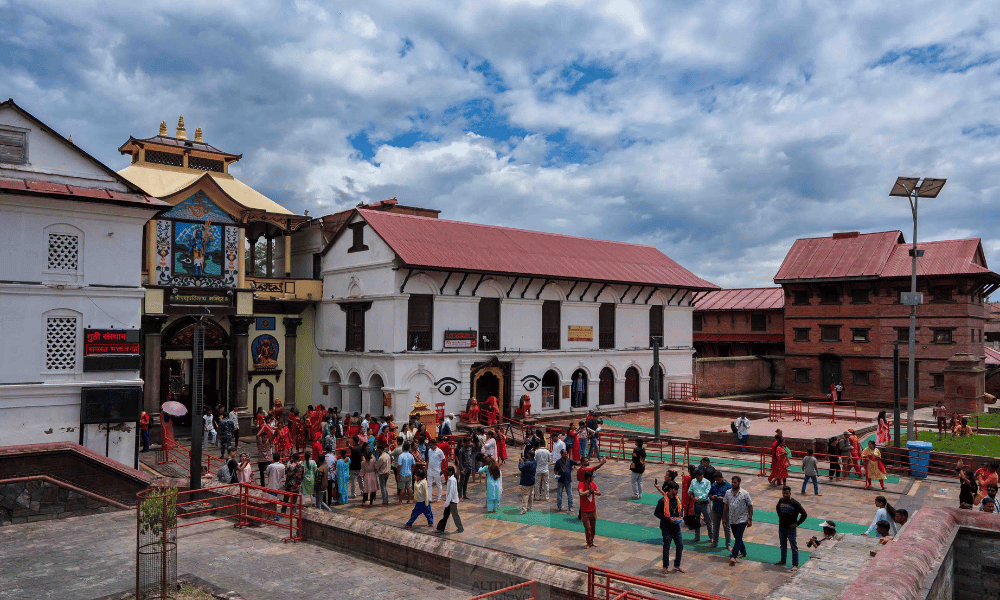
The Western Entrance Courtyard at Pashupatinath Temple is an important part of the complex, incorporating traditional Nepali and Hindu architecture. This transitional space, adorned with ethnic decor, acts as a portal to the temple's spiritual core. Pilgrims gather here for rituals, prayers, and socialization. Local sellers sell religious artifacts, which add to the cultural environment. To protect safety, the courtyard is gated.
Pashupatinath Temple

The Pashupatinath Temple in Kathmandu is a popular Hindu pilgrimage site devoted to Lord Shiva. It is a UNESCO World Heritage Site because of its unique pagoda-style architecture along the Bagmati River. Spiritual rites, elaborate sculptures, and cremation ghats distinguish the temple complex. Pashupatinath is a pilgrimage and tourist destination of cultural and religious significance, symbolizing Nepal's rich legacy.
Pashupatinath Arya Ghat

Arya Ghat, located within Kathmandu's Pashupatinath Temple complex, is a dedicated cremation ghat beside the Bagmati River. It has cultural significance as a sacred location for Hindu funeral rituals, where families perform traditional cremations. The ghat is an important part of the spiritual rites performed at Pashupatinath.
Bagmati River
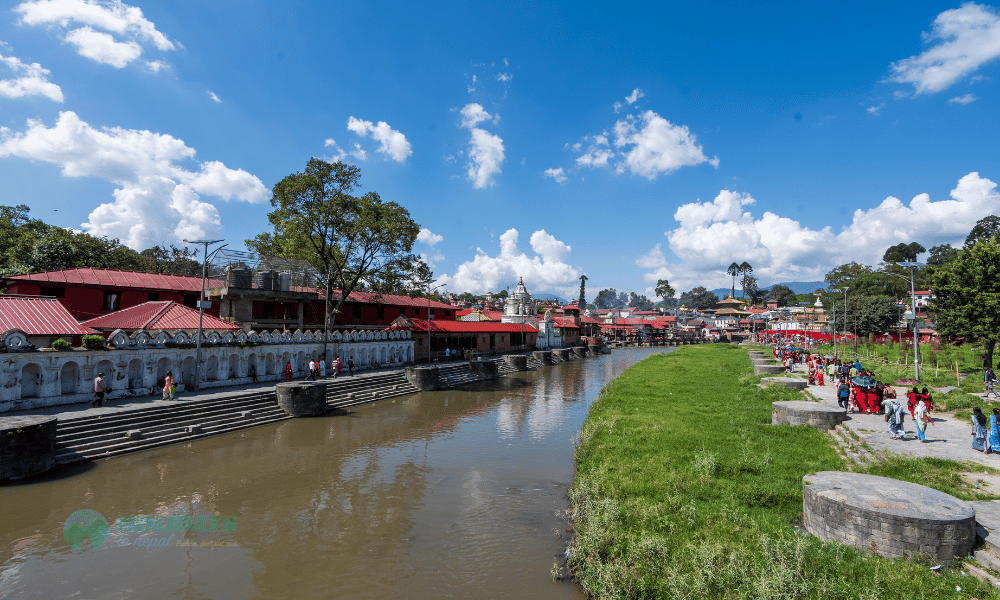
The Bagmati River runs alongside the Pashupatinath Temple and is important in Hindu ceremonies, particularly cremations at Arya Ghat within the temple complex. It represents the mystical link between life and death, adding to Pashupatinath's spiritual atmosphere.
Sadhu’s in Pashupatinath
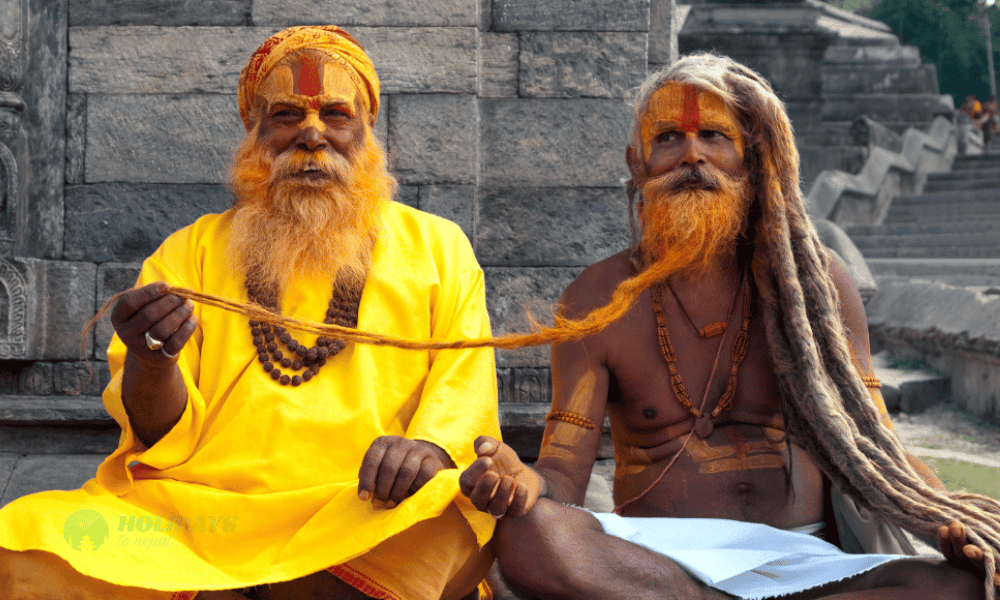
Sadhus are revered Hindu holy men who live a strict lifestyle in Pashupatinath. They live in the temple compound, dressed in saffron robes and embodying devotion and discipline. Visitors will come across people engaged in meditation and religious rites, lending Pashupatinath a particular spiritual aura.
Pandhra Shivalaya
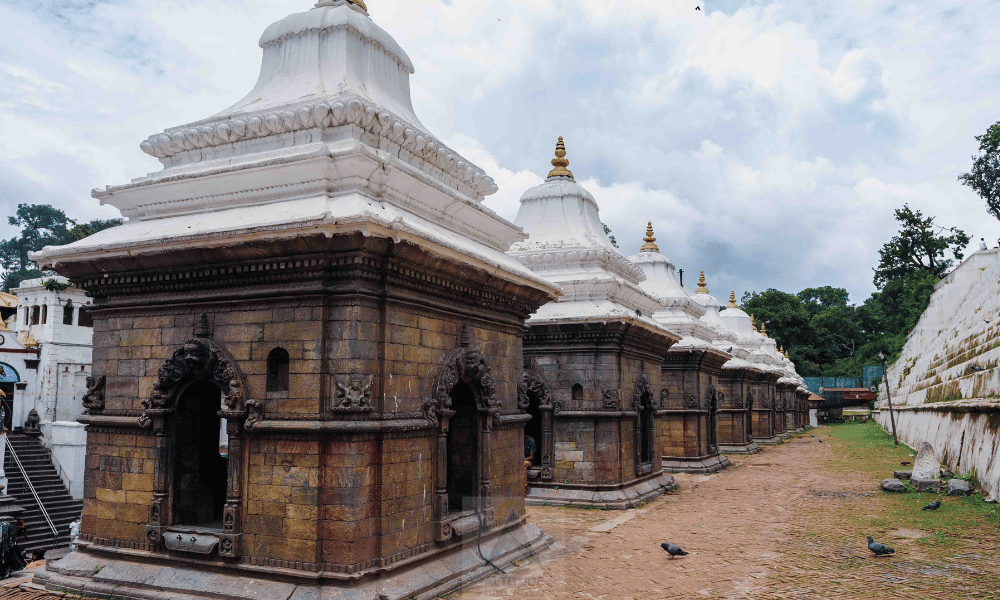
Pandra Shivalaya refers to a group of 15 Shiva temples within the Pashupatinath temple complex in Kathmandu. Each shrine contains a lingam, which represents Lord Shiva. This sacred location adds to Pashupatinath's spiritual richness. Pandra Shivalaya is an important part of the Pashupatinath Temple complex's varied religious and architectural legacy.
Guhyeshwari Temple
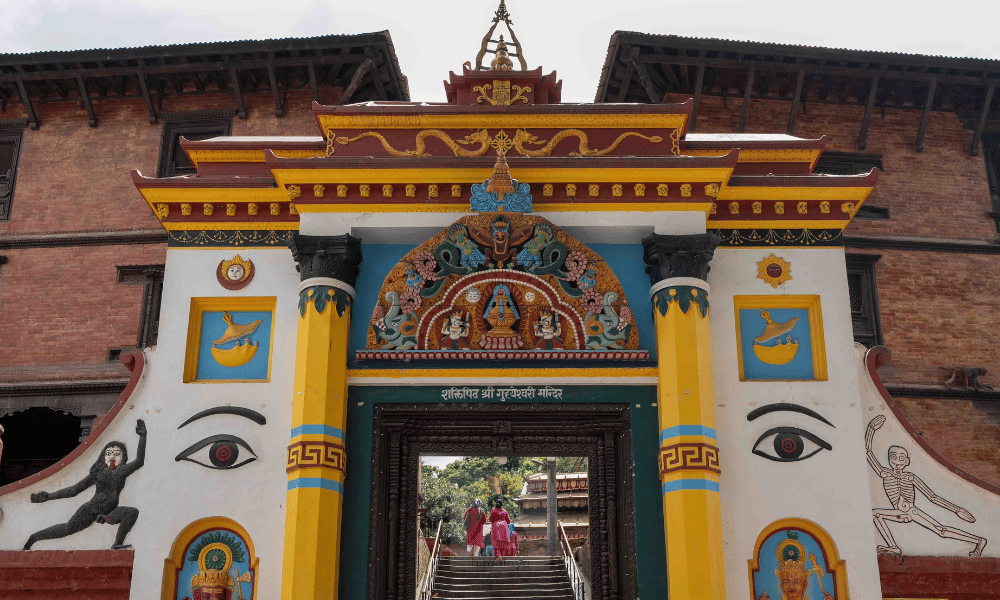
The holy Hindu shrine Guhyeshwari Temple, located close to Pashupatinath in Kathmandu, Nepal, is devoted to the goddess Guhyeshwari, a manifestation of Parvati. It is one of the Shakti Peethas, or sacred sites associated with the goddess. The temple is important for individuals seeking marital peace and reproductive benefits, bringing pilgrims and visitors to the Pashupatinath area.
Gorakhnath Temple
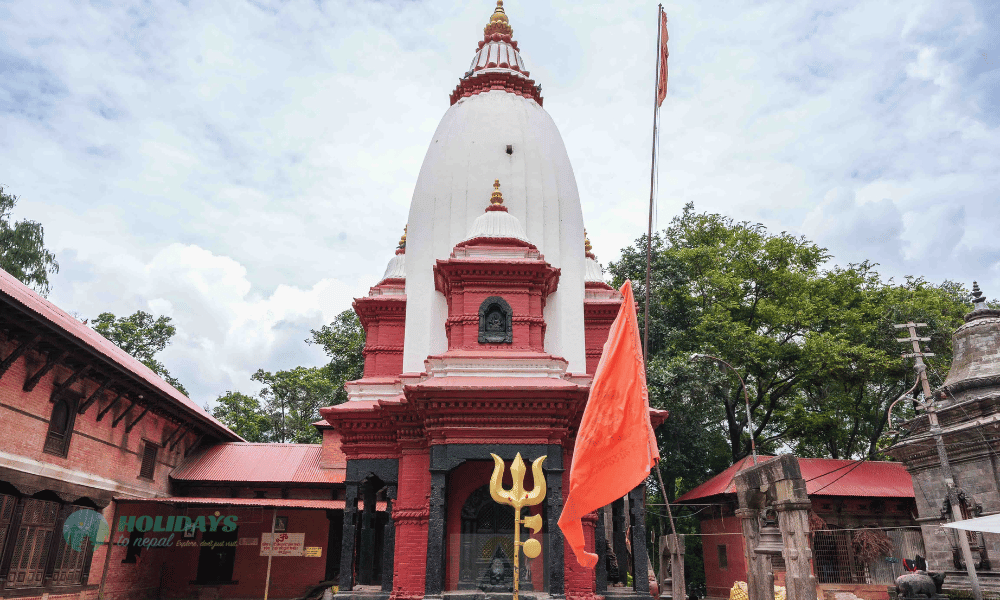
Gorakhnath Temple, located in Kathmandu's Pashupatinath complex, is devoted to the revered saint Gorakhnath. It serves as a spiritual center for Nath tradition followers, gathering devotees for meditation and religious practices. The temple is an important part of Pashupatinath's unique religious and cultural landscape.
Pashupatinath Viewpoint
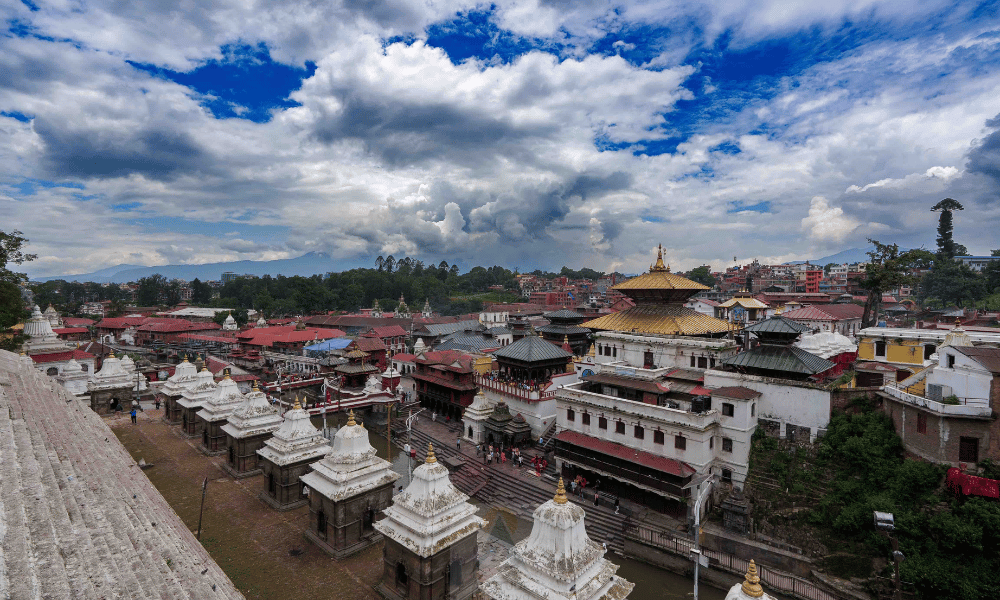
The Pashupatinath Viewpoint in Kathmandu, Nepal, offers a panoramic view of the revered Pashupatinath Temple and its surrounds. The location provides breathtaking views of the temple complex, the Bagmati River, and the lush surroundings, allowing visitors to appreciate Pashupatinath's architectural and spiritual character.
Sandhya Aarati

Pashupatinath Sandhya Arati is a captivating evening ritual performed in Kathmandu's Pashupatinath Temple. The ceremony includes the lighting of lamps and the singing of devotional songs to Lord Shiva, which creates a spiritually fascinating atmosphere as the sun sets. Devotees and visitors flock to view this beautiful show, which adds to Pashupatinath's spiritual ambiance during the peaceful evening hours.
Bachhareshwari Temple
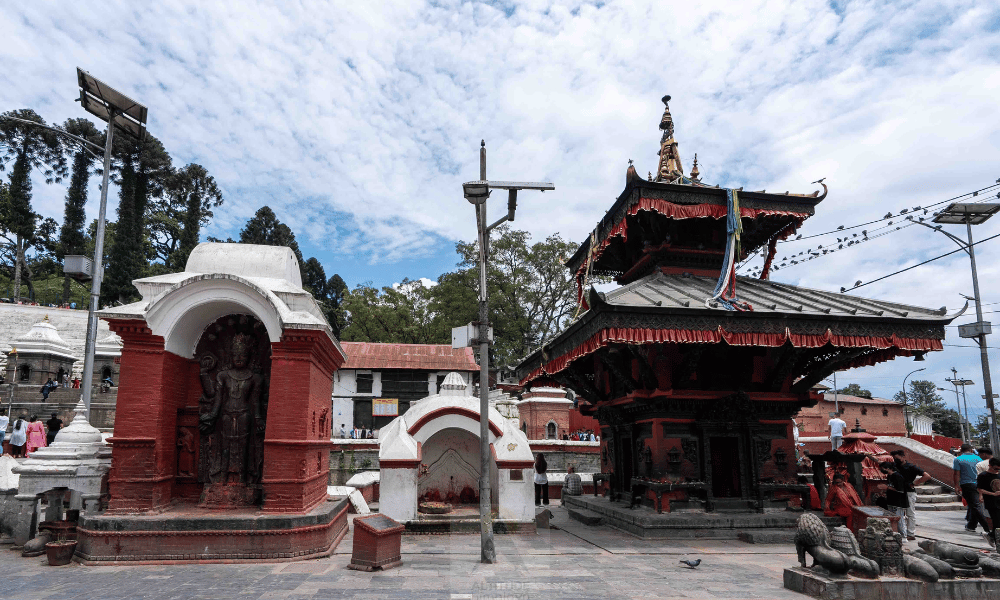
Bachhareshwari Temple is located on the west side of the Bagmati River, close to the cremation ground. The Temple honors the Goddess Parvati. The Temple is thought to have been built in the sixth century AD. Tantric figures, skeletons, and other magnificent carvings adorn the temple. Human sacrifices were once performed at this temple as part of the Maha Shivaratri Festival.
Religious Market
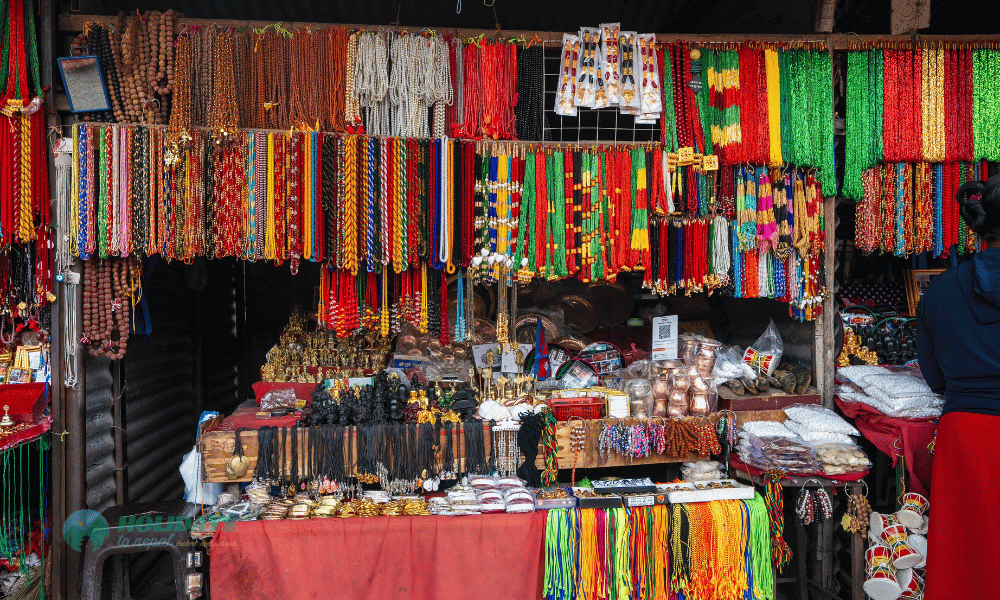
The religious market near Pashupatinath Temple sells religious goods and traditional items. Pilgrims and visitors alike browse this lively marketplace in search of things used in worship and as souvenirs, providing a cultural layer to the Pashupatinath experience.
Ram Mandir
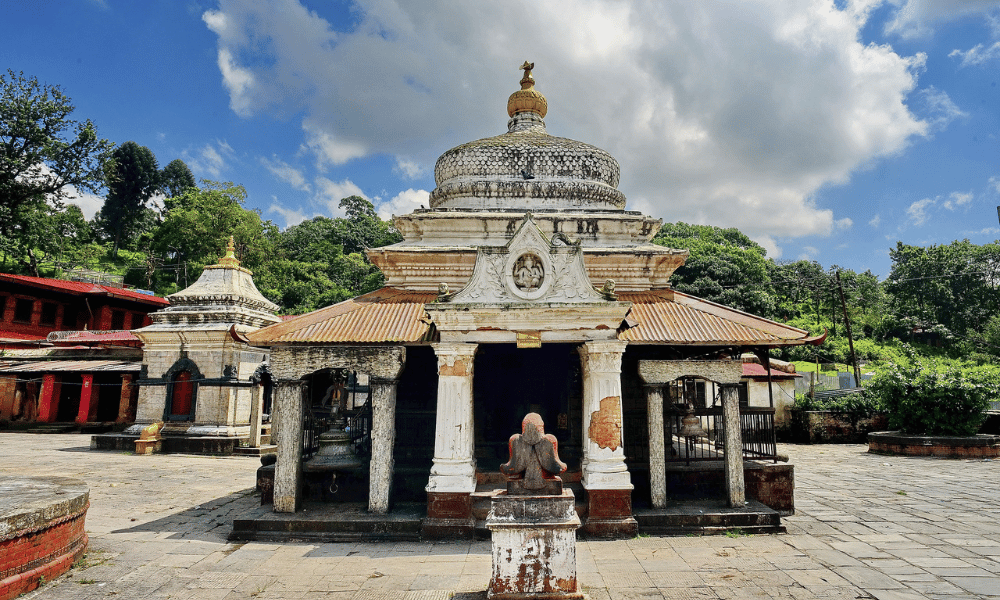
Ram Mandir is a Hindu temple on the east bank of Nepal's sacred Bagmati River, which flows through Kathmandu Valley. The Sita, Ram, and Hanuman deities are housed in the temple. Every full moon, Ram Temple hosts classical music events in the evening.
Yogi Caves
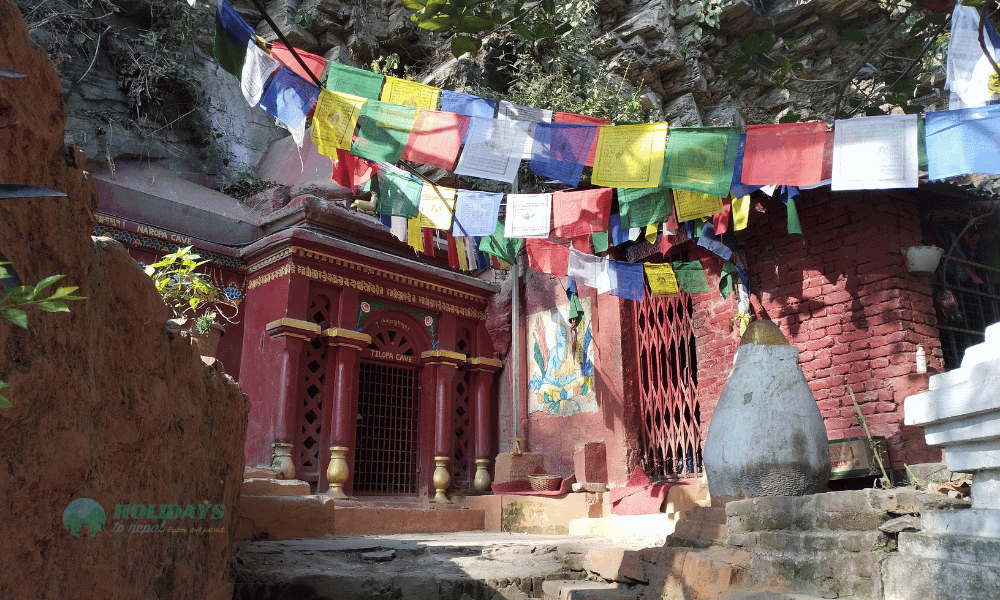
A set of yogi's caves, visible from across the river, have been in use since medieval times and are still utilized by meditators today.
Birupakshya Temple
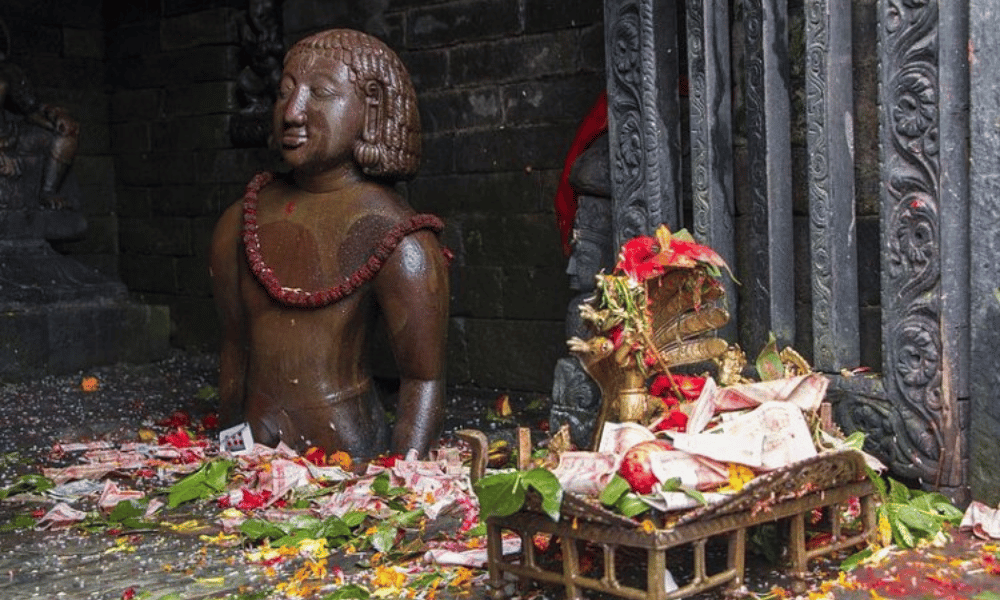
Birupakshya Temple is located on the right bank of the Bagmati River, to the east of Pashupatinath Temple.Birupakshya, also known as Kirateswor Mahadev, is worshiped at this temple. Birupakshya's body is half inside the ground and half above it. The statue is said to be slowly emerging. It is thought that if the entire statue comes out, the world will be destroyed. Also known as Kali, Virupaksha will end the Kali Yuga when he fully comes into being.
Shivaratri at Pashupatinath
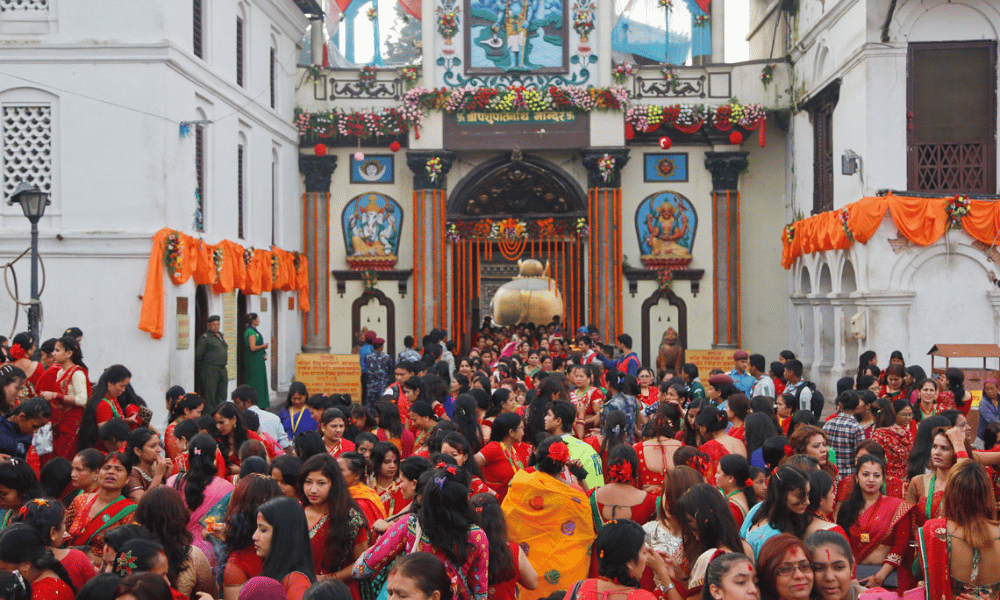
Shivaratri at Pashupatinath Temple is an important Hindu event honoring Lord Shiva. Devotees gather for night-long prayers, rituals, and lamp lighting, creating a spiritually lively atmosphere. The festival is a cultural spectacle that draws thousands of people to Pashupatinath to worship and celebrate Lord Shiva.
Teej at Pashupatinath
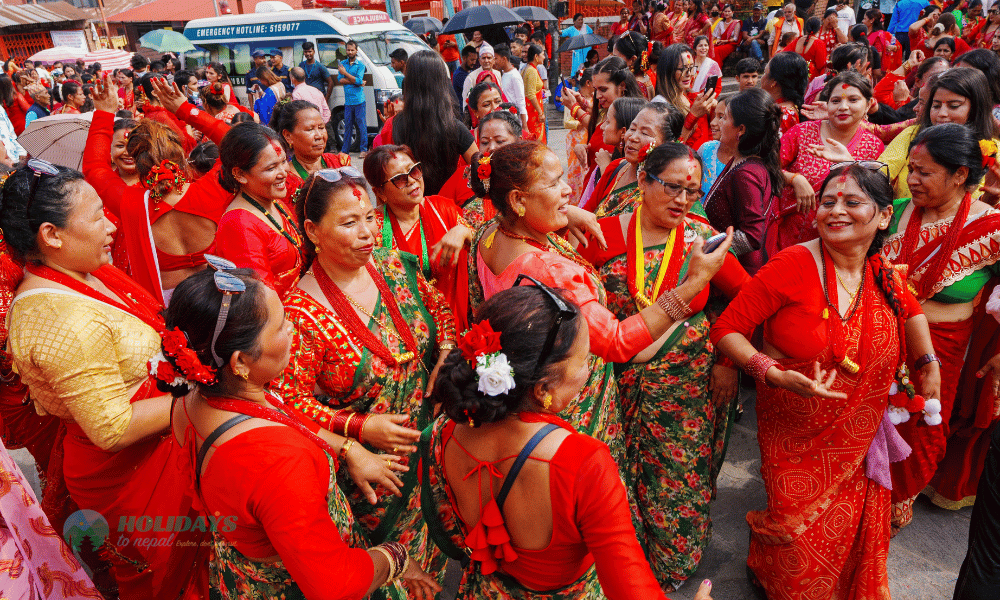
Teej, an energetic Hindu festival honoring the goddess Parvati, is celebrated with passion at Kathmandu's Pashupatinath Temple. Women, both married and unmarried, fast, pray, and celebrate in colorful costumes. Pashupatinath transforms into a bustling hub for traditional dances, crimson costumes, and joyful celebrations, signifying marital love and women's strength.
Also Read: 12 Must Visit Hindu Temples in Nepal
Conclusion
Finally, our photographic exploration of Pashupatinath Temple showed a rich tapestry of spirituality and culture. The main temple's pagoda-style majesty, embellished with golden spires and silver doors, is a tribute to the architectural grandeur that reflects centuries of devotion. Each shot captures the rich cultural heritage embedded in the temple's surroundings, from the poignant rites beside the sacred Bagmati River to the brilliant hues of the Sadhus who embody the tough spirit. The tranquil Arya Ghat, the busy religious market, and the holy sight of Sandhya Arati all contribute to Pashupatinath's complex attraction.
This visual trip provides a glimpse into more than simply a place of worship, but also a living heritage in which the spiritual and the earthly coexist in harmony. Less-visited areas, such as the intimate Arya Ghat and the bustling religious market, reveal dimensions of daily life and cultural exchanges. Pashupatinath appears not merely as a pilgrimage destination, but also as a dynamic crossroads where the divine, historical, and contemporary collide. We believe that by sharing these photographs, we can continue to appreciate the religious and cultural richness that make Pashupatinath Temple a truly exceptional and timeless destination.


